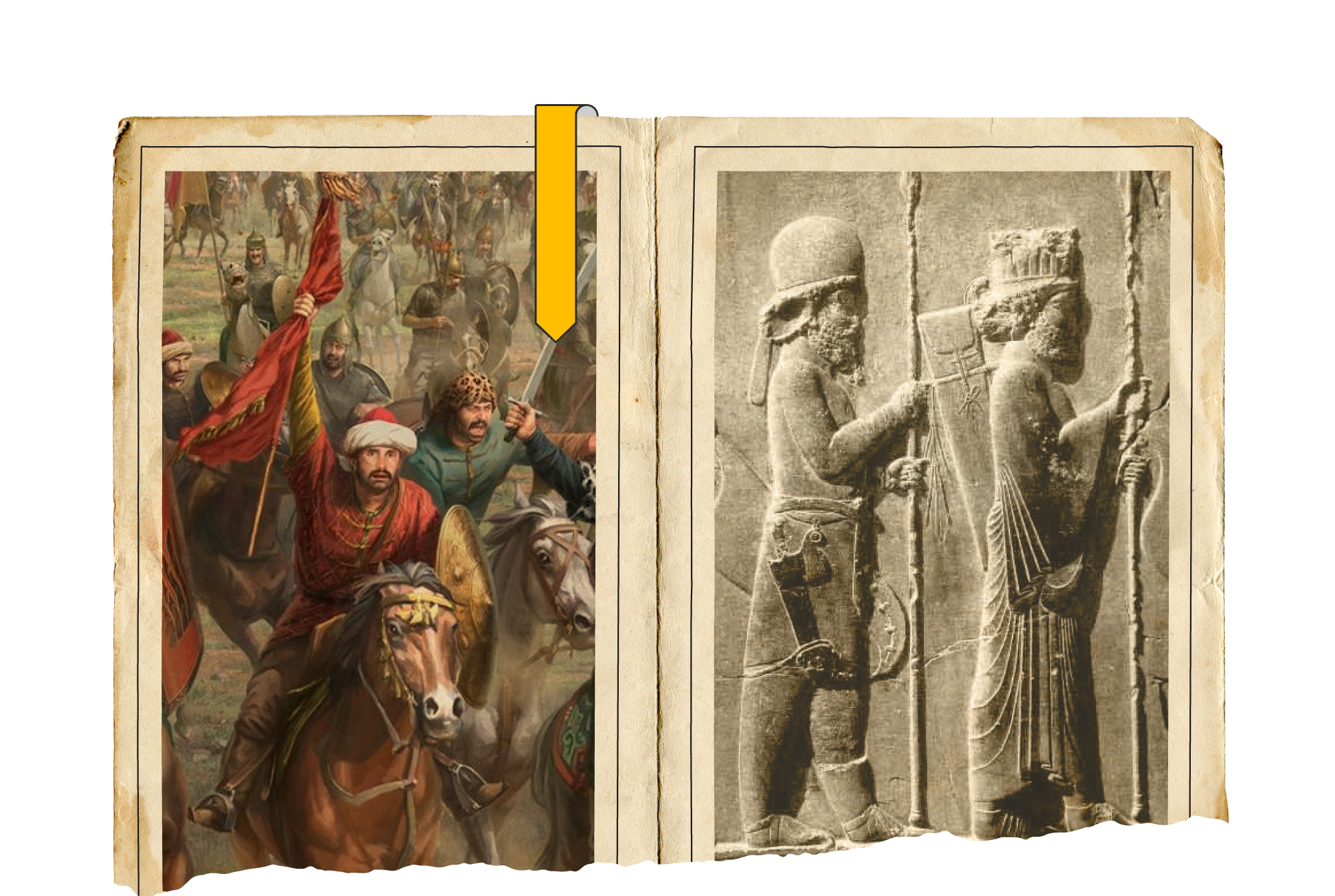
Classical European-Persian Alliance Explains
the Secret of Contemporary Iranian Persistence
Since their dissociation from Islamic faith after the establishment of the Safavid state, Persian kings have insisted on adopting extremism, adapting and directing religious emotions to serve Persians’ ethnic goals. In that Safavid policy there is a clear deception of Muslims, where the saying of US President Abraham Lincoln applies: “You can deceive all people for some time, some people all the time, but you cannot deceive all people all the time”. It strived to deceive people and their religion, in return for strengthening its relationship with Christian states, searching for strong alliances to target the Arab region and avenge the fall of the pagan Sasanian Empire at the hands and swords of Arab Muslims.
Safavid hatred prompted the rulers of Persia to strive to fight the Arab East, which led to the political clash that caused a rift and wound that led to “division and warfare based on the disagreement over the sect. The other, which is not less important, is that fighting weakened both parties and paved the way to western colonization to control many Islamic states, interfering in their affairs and contributing to the creation of many problems, some of which still exist to date, which later became known as the problems of the Middle East”.
Battle of Chaldiran was a decisive turning point in the Persians’ tendency to strengthen their alliance with the Crusader West when they fought with the Ottomans, who had the same goal of striving to control and colonize the Arab world, which ended with the defeat of the Safavids and hastened the destruction of Shah Ismail the Safavid at the age of not more than 38 years. Perhaps that military defeat was behind the Persians’ conviction of the need to seek help from their Christian ally against the enemy; the Ottoman Empire, which the same project shared in terms of influence and control, as well as the eternal enemy represented by Muslim Arabs.
The Safavids were not satisfied with opening the fronts of military confrontation only, but rather they strived to adapt the religious text to strike at the symbols of the Islamic nation and their pillars, in parallel with polishing Christianity and presenting it as a peaceful and appeasement religion. This was in military preparation for prospective military alliances against the Arab world. Examination of the key publications on Safavid religious, which deviated from the purity of the faith and tended towards sanctifying the political-ethnic orientation of the Persians, confirms that the “demonization” of the symbols of Islam has turned into a religious belief that everyone who fell victim to the Safavid “propaganda” worships. Perhaps a mere look at what Al-Kulayni wrote in Al-Kafi, Al-Tusi in Alestebsar and Ibn Babioh al-Qummi in Man La Yahdaruhu al-Faqih, confirms that these intellectual toxins and terrorist remnants are nothing but a discharge of the doctrine of hatred against Muslim Arabs. This is because striking belief stems from targeting men who carried the trust of conveying the message of the Holy Prophet, and to whom Allah Almighty describes as loyal, honest and upright; those who were among the persons who faithfully pledged allegiance to Allah, fulfilled the trust and were promised Paradise.
The Safavids were the first to change the direction of the Islamic process and were the first race to claim affiliation with Islam. Meanwhile, they strived to strike it with malicious heresies that no one in the worlds preceded them to. Thus, Safavid state walked proceeded in “its directions, opposite to the course of the nation’s history, only because it was founded on deviant foundations. In addition, most of its military efforts and political relations are directed to strike the nation from within”.
Despite the political piety practiced by the Persians during their periods of weakness, and the “Shah Abbas’s abandonment of his extremist Alawism in his letters to the Ottomans”, which he “started by greeting the four rightly guided caliphs”, yet the truth of the corrupt belief indicates that the Safavids were striving to pit public opinion against Muslim symbols in order to legitimize their hostility to the Ottomans first, and then prepared to pounce on the center of the Islamic nation, represented in the Two Holy Mosques.
Safavids led a political, intellectual and religious war against Arab Muslims.

The reality of international relations today confirms that Safavid Iran indicated great flexibility in linking classic alliances with the West, despite its claim of hostility to America and raising slogans of doom and death to Israel. Perhaps what is happening in the Arab region of empowering Iran in Syria, Iraq, Yemen and Lebanon, with Western blessing, indicates that the mullahs have always been at the heart of the Western project in the region.
It can be said, in general, that despite the current Arab caution regarding the Iranian threat, yet those who move the threads of the game in dark rooms and behind walls are forces that do not differ in their hostility and plot to the Arab and Islamic nation from Iran, no matter how much it tries to embellish its malicious goals with the powders of freedom, democracy and human rights. Therefore, the opponent of the Arabs and Muslims is not, and never was, Iran alone.


- Basem Hamza, Iran’s Military, Doctrinal, and Domestic Policy and Its Impact on Foreign Policy during the Reign of Shah Ismail Al-Safavid 1501-1524, Journal of Iranian Studies, University of Basra, pp. 10-11 (2009).
- Fahmy Huwaidi, History and Religion in the Relationship between Arabs and Iran, a study published on the website of the Arab Center for Research and Policy Studies (2011).
- Muhammad Suhail Taqosh, History of the Safavid State in Iran (Beirut: Dar Al-Nafais, 2009).
- Haitham Al-Kiswani, Safavid State and its Impact on Islamic World, 2nd Edition (Manarat Book Series, 2008).

